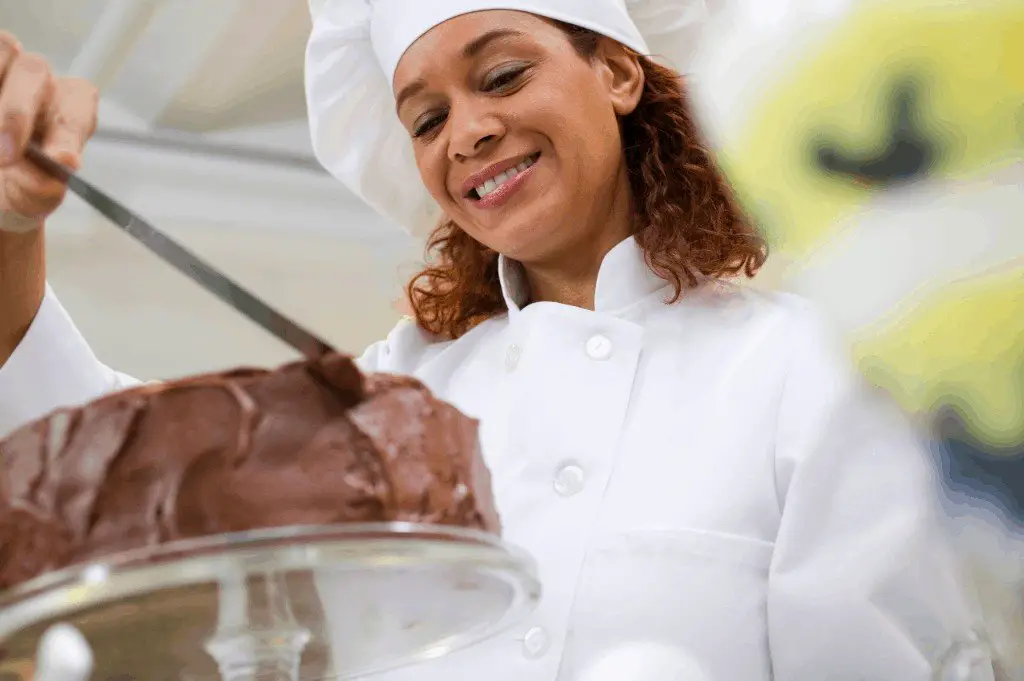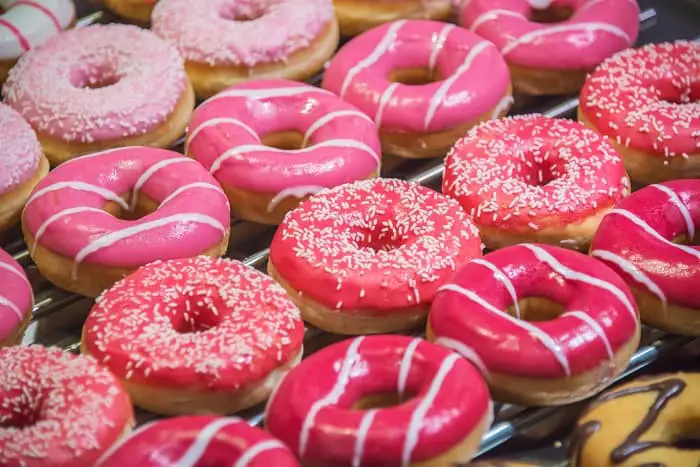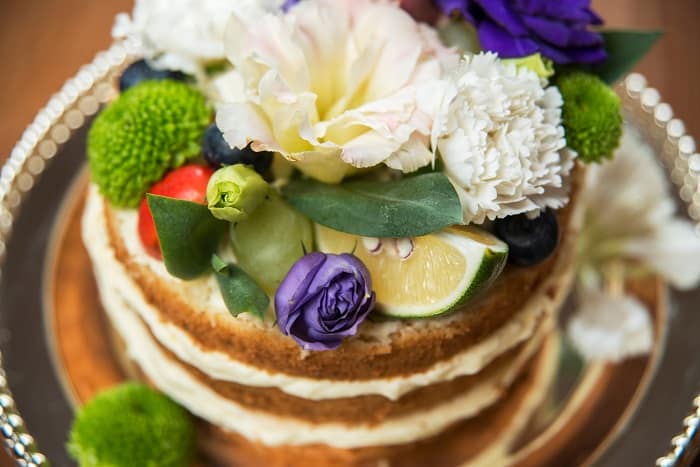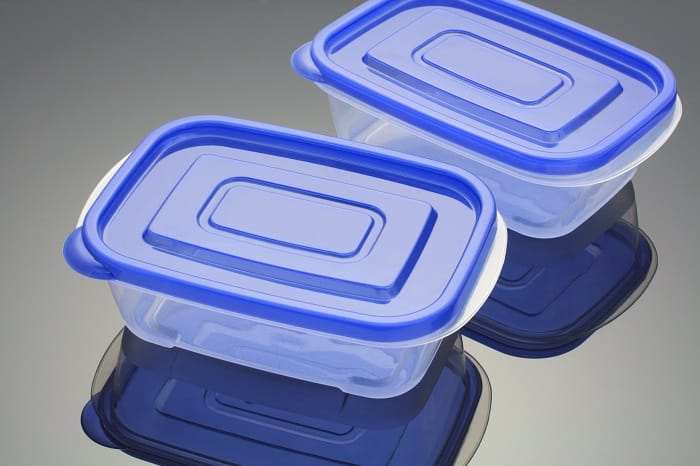Last Updated on January 12, 2023
Frosting vs icing? Many of us use frosting and icing interchangeably when talking about desserts. We love the sweet toppings that go on desserts, but we aren’t always sure if we are calling it the right thing. So many of us wonder: is icing and frosting the same thing?
For many sweet tooth lovers, whether it is frosting or icing, it is a much-loved addition to desserts. Cakes, cupcakes, brownies, cookies, cinnamon rolls, donuts – all taste delicious when they have a sweet topping added to them.
Is There a Difference Between Frosting and Icing?
Though many people use the words frosting and icing interchangeably, there is a difference between the two. They are both used as toppings for desserts and they are similar, but there are differences that distinguish the two from each other.
Since frostings and icings are similar it is easy to get them confused. However, if you plan on baking, it is good to know the difference between them.
What is Frosting?
The frosting is the decadent topping that is commonly used on cakes, cupcakes, brownies, and cookies. Frosting has a rich and creamy taste that has a cream or butter base. It often has a light and fluffy texture.
Frosting is great for decorating, as it is able to hold its shape better than icing. It can be used to frost cakes and put between cake layers. Buttercreams, cream cheese, and whipped creams are all types of frostings.
What Is Icing?
Icing is known to be like a glaze and is often used on donuts, cinnamon rolls, and pastries. It has a thinner consistency than frosting and has a glossy appearance. Icing generally hardens after it has been added to desserts, whereas frosting will maintain its fluffy texture.
Icing is typically made from a sugar base, and may also contain egg whites, cream or butter. Icing generally has more of a sugary taste compared to frosting, which has more of a butter taste.
Icing is often drizzled onto desserts, where frosting is generally spread with a spatula or piped with a piping bag. Due to icing having a thinner consistency, it generally isn’t used in piping bags.
Icing generally isn’t used for cakes, as you don’t have much control over how it will look. Unlike frosting, icing is not good for piping and designs.
Frosting will hold toppings, such as sprinkles and candies, better than icing will. If you plan to put toppings on icing it is best to do it right away, before the icing hardens and dries. The toppings will hold better if they are added before the icing dries.
The History of Frosting and Icing
Icing originally got its name because the sugar granules resembled ice. The history of icing and frosting is very similar, as simple recipes containing sugar and egg whites can be traced back to the 1600s.
Moving on to the 1700s, frosted wedding cakes came into popularity. Aristocrats served lavishly decorated cakes as a sign of their wealth.
In 1840, Queen Victoria of England designed the wedding cake we are familiar with now. The cake was made of several tiers and decorated with white frosting.
The white frosting was a sign of wealth; the whiter frosting you had on your cake, the wealthier you were. The white frosting showed the quality, amount and expense of sugar used in the frosting. The whiter and more abundant frosting would show that you came from great wealth.
It wasn’t until the 1950s that frosted cupcakes grew into popularity. Around that same time is when buttercream frosting was produced. Buttercream frosting is one of the most popular frostings; typically made from some combination of butter, powdered sugar, cream, and flavorings.
Frosting vs Icing Today
Now there are several variations of frostings available, such as buttercream, whipped cream, meringue and cream cheese. There are even several different types of buttercreams made. There are different types of icings as well, such as royal icing, cream cheese, and ganache.
Frosting and icings can also come in different flavors. Some of the most popular flavors include vanilla, chocolate, strawberry, mint, and caramel. Food coloring can also be added to both frostings and icings.
Most leftover homemade frostings and icings can be stored in the fridge in an airtight container for up to a week. They can also generally be stored in the freezer for up to six months.
Most frosted and iced baked goods can be stored covered at room temperature for three to four days. Some frostings and icings, such as ones that contain cream cheese, should be stored in the fridge when not being served.
Both frostings and icings do not hold up well in the heat and humidity. It is best to store them somewhere cool and dry. If you are serving your frosted or iced baked goods at an outdoor event during summer, it is best to keep them in the fridge up until you serve it.
Is Icing and Frosting the Same Thing: Recipe Comparison
Now that we’ve looked at the similarities and differences between frosting and icing, you may be wondering how they compare when you make them. While you may presume that the ingredients are similar, this is not the case and different types of frosting and icing require different ingredients. Let’s take a look at the most common types of frosting and icing, and how to make them.
How to Make Royal Icing
Royal icing is typically made using egg whites. You can use either raw egg whites for this, or egg white powder, or meringue powder. As well as egg whites, powdered sugar and flavoring are often used. The ingredients you’ll need for this recipe are:
- 6 tablespoons of egg whites
- 1 teaspoon of vanilla extract
- 4 cups of sifted powdered sugar
- water
Now all you need to do is:
- Using a stand mixer (or electric mixer), add the vanilla and egg whites (or egg white substitute). Using the mixer on medium, mix well for around 15-20 seconds.
- Add one cup of powdered sugar to the frothy egg white mixture at a time. Do not add the next cup of powdered sugar, until the previous batch is fully incorporated. Be sure to scrape down the bowl as you are mixing.
- If your icing appears too thin, you can add an additional tablespoon of powdered sugar (be sure to sift it first) and keep adding more until you reach the consistency you’re looking for. If your icing appears too thick, add a tablespoon of water and keep adding until you’re happy with the consistency.
- Add the icing to a piping bag and ensure you’re using a small tip, as this icing doesn’t tend to be very thick at all. Use your royal icing as needed. I’ve found that this style of icing works best for decorating cookies; particularly if you have intricate designs.
- Be sure to let your icing dry onto your cookies before you try to move them. This usually takes at least a few hours; maybe longer in warmer temperatures. Store in an airtight container for best results. These cookies should last around five days.
How to Make Buttercream Frosting
Buttercream frosting is one of the most popular forms of frosting that there is. You may know it better as butter frosting or butter icing. Buttercream is so popular, because it’s so diverse. Not only is it used for decorating cakes, but also for coating and filling them too. As the name suggests, the main ingredient in this frosting is butter. Additional ingredients are powdered sugar, and usually flavored extract, such as vanilla.
The ingredients you’ll need for this recipe are:
- 3 cups of powdered sugar
- 1/3 cup of softened butter
- 1 teaspoon of vanilla extract
- 1-2 tablespoons of milk
Now all you need to do is:
- Grab a bowl and add both the butter and powdered sugar. With a stand mixer, mix on a low speed until completely combined; it should be fluffy. Now add the extract, as well as one tablespoon of milk. Beat until light and fluffy.
- If your frosting seems too thin, add additional powdered sugar. If your frosting seems too thick, add an additional tablespoon of milk. Your frosting is now ready to use.
- Buttercream frosting can be stored in an airtight container for up to a week, in the fridge.
Frosting vs Icing – Is Icing and Frosting the Same Thing?
There are many differences between the two. The frosting has a rich and creamy buttery taste, with a light and fluffy texture. Icing has a thin texture, with a sugary taste and glossy appearance.
Frosting is most commonly used on cakes and cupcakes, though it is also popular on brownies and cookies. Icing is popular on donuts, cinnamon rolls and pastries; though it is also used on sugar cookies. The frosting is more commonly used for creating elaborate decorations, where icing is more often drizzled on like a glaze.
Though frostings and icings can be used interchangeably on certain desserts, it is important to know that there is a difference between the two. People will commonly use frosting or icing to describe any type of toppings they use for desserts, not realizing that there is a difference between them.
We hope this post has helped you to answer the question: is icing and frosting the same thing? Please comment if you enjoyed this article on the differences in frosting and icing, or if you have any questions regarding this post!
Royal Icing Recipe #1
Ingredients
- 6 tbsp egg whites
- 1 tsp vanilla extract
- 4 cups sifted powdered sugar
- water
Instructions
- Using a stand mixer (or electric mixer), add the vanilla and egg whites (or egg white substitute). Using the mixer on medium, mix well for around 15-20 seconds.
- Add one cup of powdered sugar to the frothy egg white mixture at a time. Do not add the next cup of powdered sugar, until the previous batch is fully incorporated. Be sure to scrape down the bowl as you are mixing.
- If your icing appears too thin, you can add an additional tablespoon of powdered sugar (be sure to sift it first) and keep adding more until you reach the consistency you're looking for. If your icing appears too thick, add a tablespoon of water and keep adding until you're happy with the consistency.
- Add the icing to a piping bag and ensure you're using a small tip, as this icing doesn't tend to be very thick at all. Use your royal icing as needed. I've found that this style of icing works best for decorating cookies; particularly if you have intricate designs.
- Be sure to let your icing dry onto your cookies before you try to move them. This usually takes at least a few hours; maybe longer in warmer temperatures. Store in an airtight container for best results. These cookies should last around five days.

Karen is a passionate pastry chef who loves to create delicious baked goods. She has been in the culinary arts for over 10 years, honing her skills and perfecting her craft. Karen is known for her creativity and attention to detail, creating unique desserts that bring a smile to everyone’s face. She is always looking for ways to challenge herself and come up with new recipes that are both tasty and visually appealing. Karen loves to experiment with different flavors and textures, and she is committed to providing the highest quality of products to her customers.






